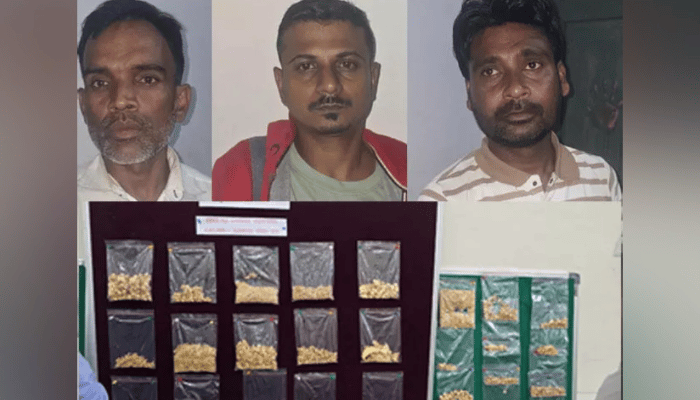Karnataka Police Crack ₹3 Crore Gold Heist Using ₹30 Pav Bhaji Digital Trail.
Kalaburagi’s summer air lay thick and electric on July 11, 2025. Masked men faces shrouded in anticipation and fear burst into Marathulla Malik’s quiet gold jewellery shop, intent on pulling off one of Karnataka’s most audacious heists.
NATIONAL
Thinkbrief
7/23/20253 min read


Kalaburagi’s summer air lay thick and electric on July 11, 2025. Masked men faces shrouded in anticipation and fear burst into Marathulla Malik’s quiet gold jewellery shop, intent on pulling off one of Karnataka’s most audacious heists. Within minutes, they’d tied up Malik, ransacked his store, and cracked open his locker, making off with what would later be revealed as nearly 3kg of glittering ornaments and bundles of cash. This was supposed to be the perfect crime. For days, the city buzzed with the news: a daylight robbery had netted a haul valued at an astonishing ₹3 crore, and the criminals had evaporated from the scene as if they’d never been there.
But even the best laid plans can unravel on the smallest of details. In this case, a modest, spicy plate of pav bhaji just ₹30 would trigger the dominoes.
What the masked thieves hadn’t counted on was the relentless resolve of Kalaburagi’s police. From the outset, officers faced two puzzles not just the robbery itself, but also suspicious discrepancies in Malik’s account. He claimed only 805 grams of gold had vanished, a figure that didn’t seem to square with the growing evidence of a much larger loot. Police quickly deduced the shop owner was concealing his own unaccounted gold, hoping to avoid further scrutiny as he tried to manage the chaos the robbers had left behind.
The hunt for facts took place in real time and in digital footprints. Eyewitness statements, a mass of CCTV tapes, and on-the-ground detective work all played their part. Then came the breakthrough. Investigators, sifting through digital payment records near the crime scene, discovered a transaction just ₹30 paid via PhonePe for a nearby plate of pav bhaji. The payment was made by Farooq Ahmed Malik, a local gold merchant known to frequent the neighborhood. That seemingly insignificant purchase unlocked everything.
Detectives revisited surrounding CCTV footage, retracing every step Farooq had made that afternoon. There he stood, munching on his snack, contacting his accomplices, monitoring the crime’s progress as casually as any passerby, but leaving a digital skeleton key for law enforcement. The payment app provided his contact details; from there, the dragnet widened rapidly.
It came to light that the operation’s ringleader, Ayodhya Prasad Chouhan, and his fellow plotters, including Sohail Shaikh (alias Badshah), had nursed hefty losses in their own businesses a betrayal of trust driven by desperation. As the gold was melted and spread across various states, the investigators fanned out across West Bengal, Uttar Pradesh, and Maharashtra, closing in fast despite the robbers’ attempts to vanish. Phone numbers and digital trails led police from city bus stations to shadowy hotel rooms in Mumbai, where they finally swooped in. Thanks to the digital payment, they captured Farooq and his partners in crime, recovering about ₹2.15 crore in gold and cash and restoring a measure of confidence among Kalaburagi’s shaken merchants.
As the case closed in on resolution, new chapters opened. Malik, the shop owner, came under the magnifying glass, forced to admit the actual weight of gold stolen nearly three times what he’d reported. Even as most of the stolen booty was tracked down, the investigation cast a long shadow over the methods and motivations on both sides of the law.
This saga, part digital age whodunit, part old school detective work, underscores a changing landscape where even a trivial digital payment at a local food cart can upend million-rupee schemes. Society’s new policing tools aren’t just batons and handcuffs, but little transaction alerts and surveillance footage bought with a side of street food.
Kalaburagi’s gold merchants have returned to their trade with a wary respect for the power of tiny clues, while local officers carry the badge of one of India’s most “deliciously” resolved heists. The lesson is written in the city’s memory: the smallest indulgence, the quickest digital record, can chart the downfall of the boldest criminal, with justice, inevitably, served hot.